



The National Pulses Mission (2025–31) drives India toward self-reliance in pulses, boosts food security, and improves farmer welfare. It addresses yield gaps, infrastructure needs, and climate challenges, reducing import dependence. Success requires strong implementation, farmer participation, and sustainable practices, supporting Aatmanirbhar Bharat and national nutritional security.
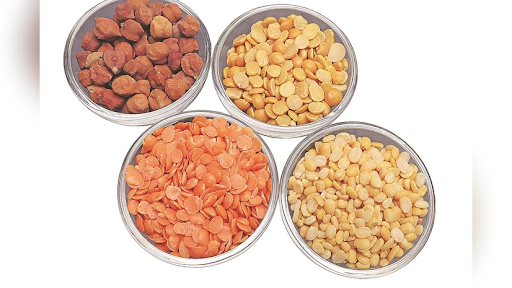
Copyright infringement not intended
Picture Courtesy: business-standard
The Union Cabinet approved the National Pulses Mission (2025–31) to boost domestic pulse production and reduce import dependency.
It is an initiative under the Ministry of Agriculture & Farmers’ Welfare, aimed at achieving self-sufficiency in pulses by 2030–31.
With a budget of ₹11,440 crore, it seeks to increase pulse production, ensure food and nutritional security, and support farmer welfare through assured procurement and modern agricultural practices.
|
Read all about: NITI Aayog Pulses Report Explained l Dal Imports: Understanding its Impact on India's Economy |
Production Targets: Increase pulse production from 242 lakh tonnes (2024–25) to 350 lakh tonnes by 2030–31 by expanding cultivation area to 310 lakh hectares and achieving a yield of 1,130 kg/ha.
Seed Security: Distribute 126 lakh quintals of certified seeds and 88 lakh free seed kits.
Assured Procurement: Guarantee 100% procurement of Tur, Urad, and Masoor at Minimum Support Price (MSP) for four years to ensure farmer income stability.
Infrastructure Development: Establish 1,000 post-harvest processing units with subsidies up to ₹25 lakh per unit to strengthen the pulse value chain.
Research & Innovation: Conduct multi-location trials to develop climate-resilient and pest-resistant pulse varieties, to enhance productivity in diverse agro-climatic zones.
Farmer Training: Implement capacity-building programmes to promote modern farming techniques and sustainable practices.
Digital Integration: Use the SATHI portal for seed distribution tracking and to streamline implementation.
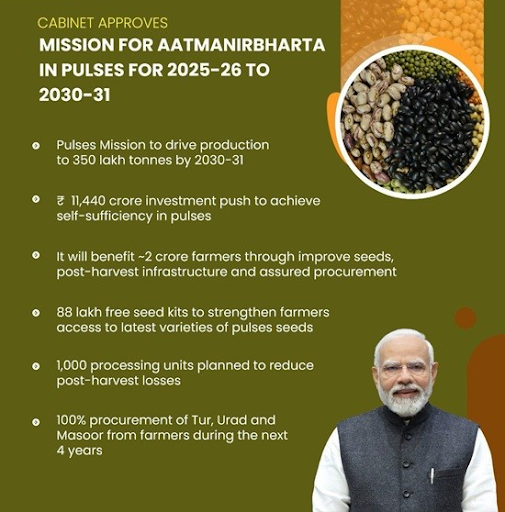
Food and Nutritional Security: Pulses are a source of affordable protein, addressing malnutrition and supporting dietary diversity, especially for vegetarian populations.
Economic Impact: Mission boosts rural economies by enhancing production and increasing farmer incomes.
Import Substitution: India imports 15–20% of its pulse requirement (e.g., Tur, Urad). The mission aims to reduce this dependency, saving foreign exchange and strengthening economic sovereignty.
Farmer Welfare: MSP-based procurement ensures income stability, while subsidies for processing units and seed kits empower small and marginal farmers.
Climate Resilience: By promoting climate-resilient varieties, the mission aligns with sustainable agriculture goals, addressing challenges like erratic monsoons and pest outbreaks.
Alignment with National Goals: Supports Aatmanirbhar Bharat and complements schemes like PM-AASHA and NFSM (National Food Security Mission) for holistic agricultural growth.
Low Yield Gaps: India’s pulse yield (800–900 kg/ha) lags behind global averages (e.g., Canada: 1,900 kg/ha), due to limited adoption of high-yielding varieties and mechanization.
Land Constraints: Expanding cultivation to 310 lakh hectares is challenging, given competition from cash crops like rice and wheat, which offer higher MSPs.
Post-Harvest Losses: Inadequate storage and processing infrastructure lead to post-harvest losses, undermining production gains.
Farmer Adoption: Limited awareness and access to modern techniques, coupled with small landholdings, hinder the adoption of climate-resilient seeds and practices.
Market Volatility: Despite MSP assurances, market distortions and middlemen dominance limit benefits to farmers.
Climate Vulnerability: Unpredictable weather patterns and water scarcity pose risks to achieving yield targets
Regional Disparities: Pulse cultivation is concentrated in states like Madhya Pradesh, Rajasthan, and Maharashtra. Scaling up in non-traditional areas (e.g., eastern India) requires infrastructure and awareness.
Sustainability: Intensive farming to meet production targets may strain soil health and water resources, requiring balanced approaches like crop rotation and organic farming.
Strengthening Seed Systems: Expand the SATHI portal’s reach and ensure timely distribution of high-yielding, climate-resilient seeds to remote areas.
Enhancing Infrastructure: Increase investment in storage and processing units to reduce post-harvest losses and strengthen supply chains.
Farmer-Centric Approach: Conduct region-specific training and provide subsidies for micro-irrigation and mechanization to boost yields on small farms.
Market Reforms: Strengthen MSP procurement mechanisms and integrate with e-NAM to ensure fair prices and reduce middlemen exploitation.
Research and Development: Collaborate with Indian Council of Agricultural Research (ICAR) and international institutions to develop pest-resistant, drought-tolerant varieties suited to diverse agro-climatic zones.
Diversification and Awareness: Promote pulses in non-traditional areas through awareness campaigns and incentives, encouraging crop diversification.
Sustainable Practices: Integrate pulses into crop rotation systems to enhance soil fertility and reduce environmental impact, aligning with sustainable development goals.
The National Pulses Mission drives India toward self-reliance by boosting pulse production, closing yield gaps, improving infrastructure, tackling climate challenges, reducing imports, strengthening farmer incomes, and ensuring nutritional security, forming a core pillar of Aatmanirbhar Bharat and sustainable agricultural growth.
Source: PIB
|
PRACTICE QUESTION Q. Critically analyze the 'National Pulses Mission' (NPM) objectives and implementation strategy. |
India is the world's largest producer, consumer, and importer of pulses, accounting for about 25% of global production.
The main pulses are gram (chickpea), tur/arhar (pigeon pea), urad (black gram), and moong (green gram). Gram is the most dominant, comprising around 40% of total production.
Madhya Pradesh, Maharashtra, and Rajasthan are the top three pulse-producing states, together accounting for over 55% of the national output.

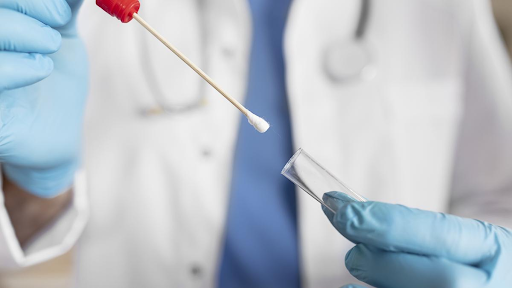

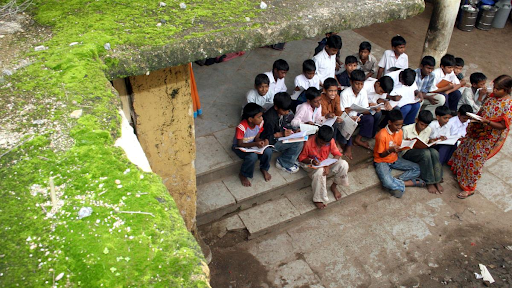
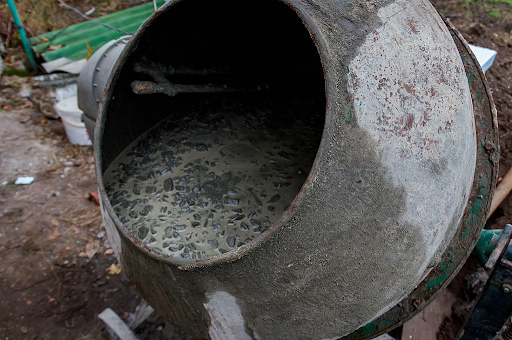

© 2025 iasgyan. All right reserved